High bycatch rates of manta and devil rays in the “small-scale” artisanal fisheries of Sri Lanka
September 2021
Daniel Fernando & Joshua D. Stewart
Keywords: Mobula • Small-scale Fisheries • Bycatch • Age Structure • Size at Maturity
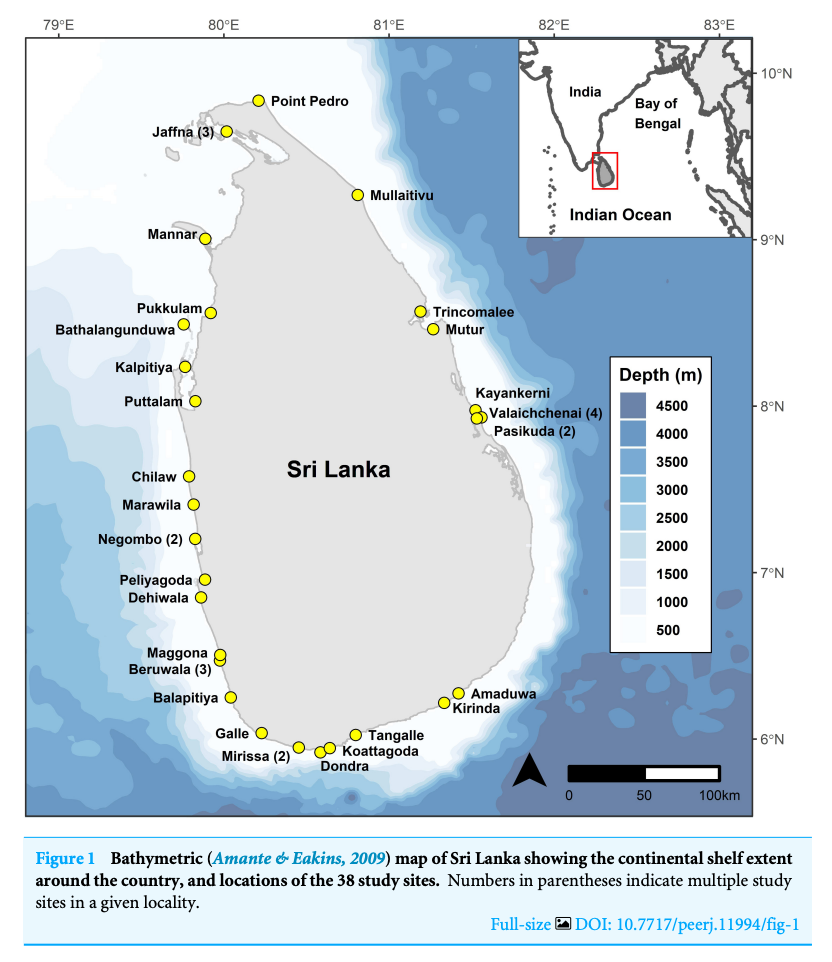
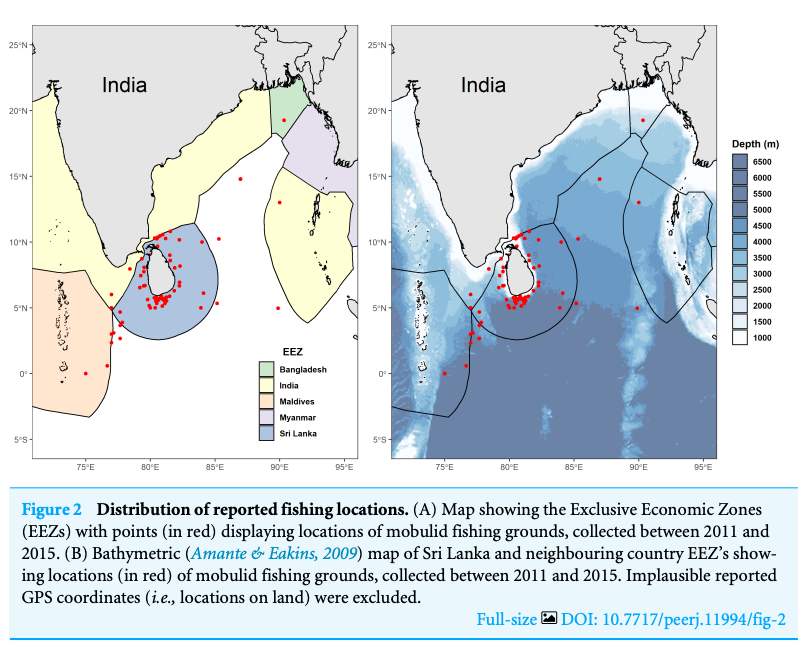
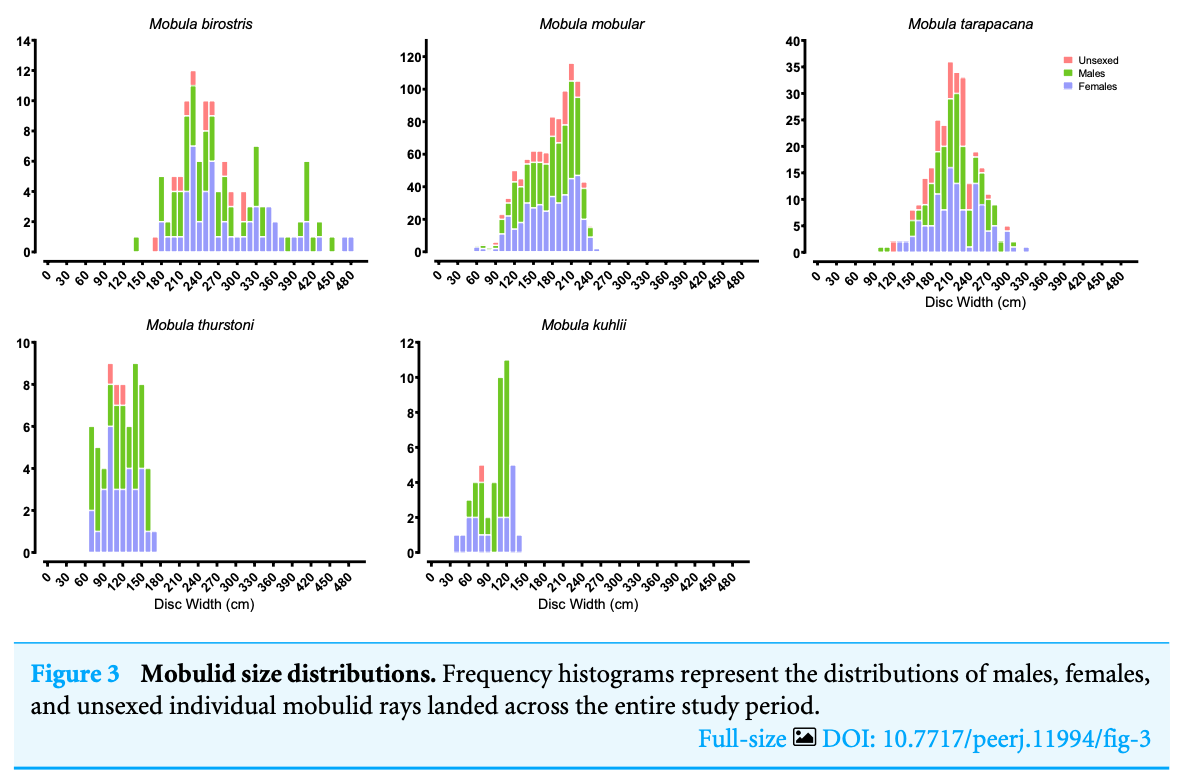
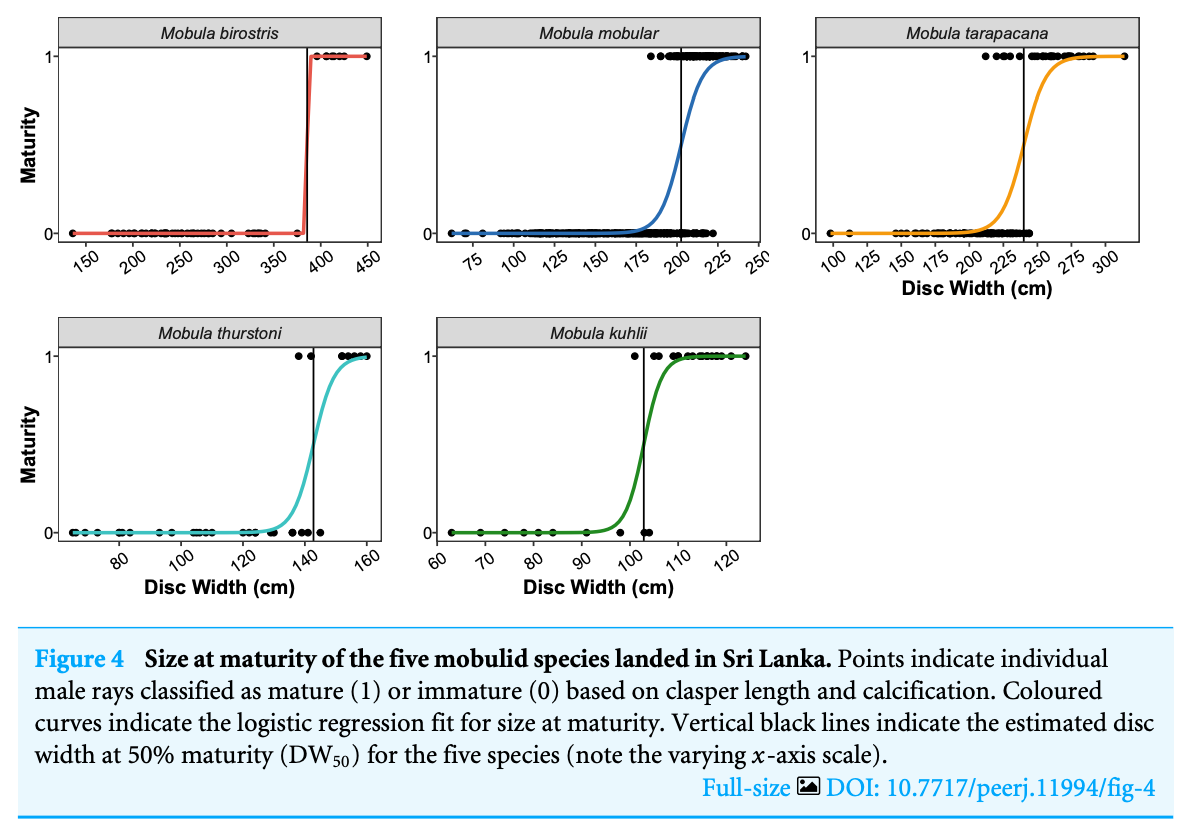
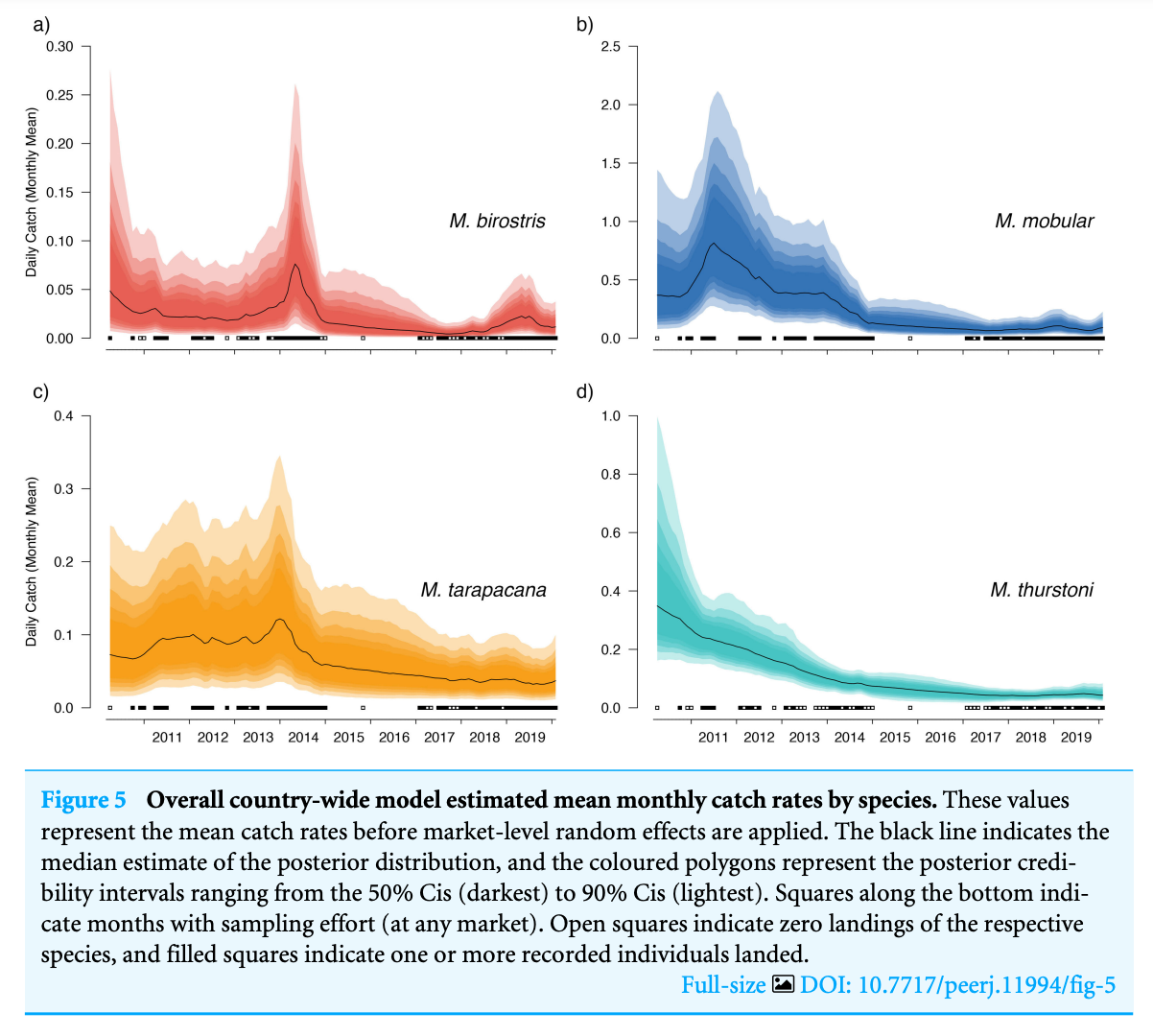
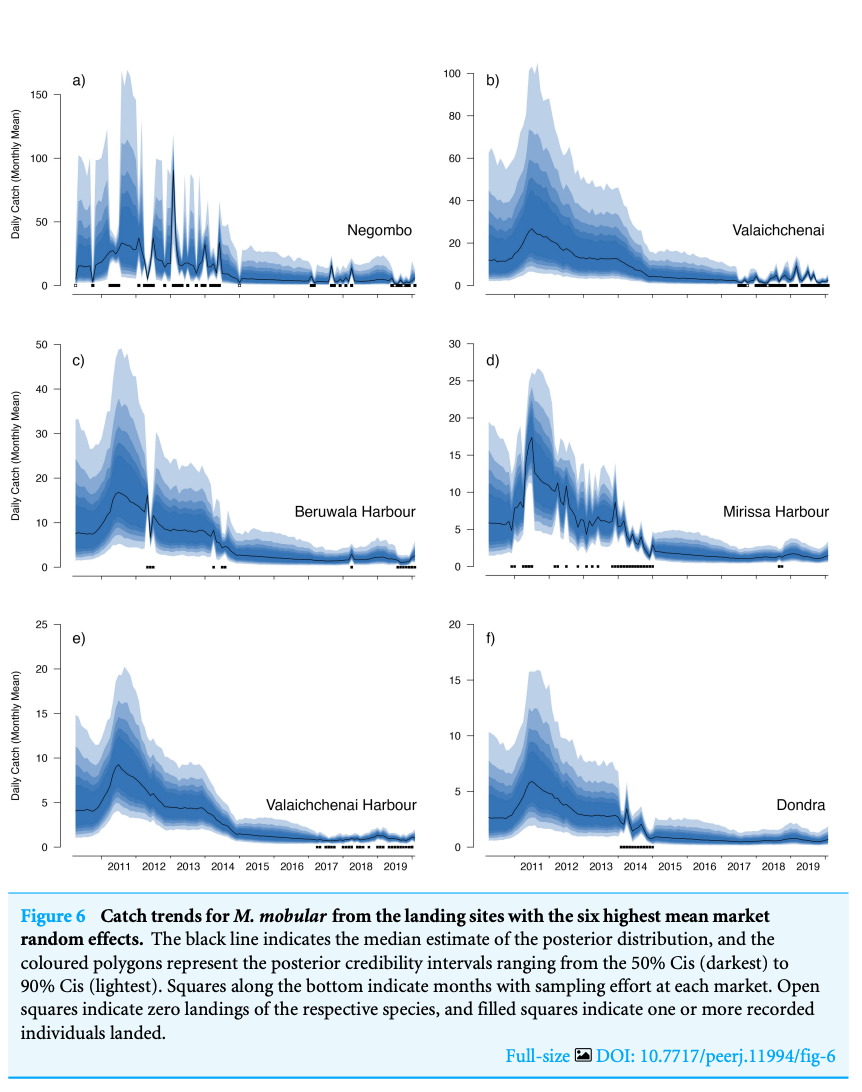
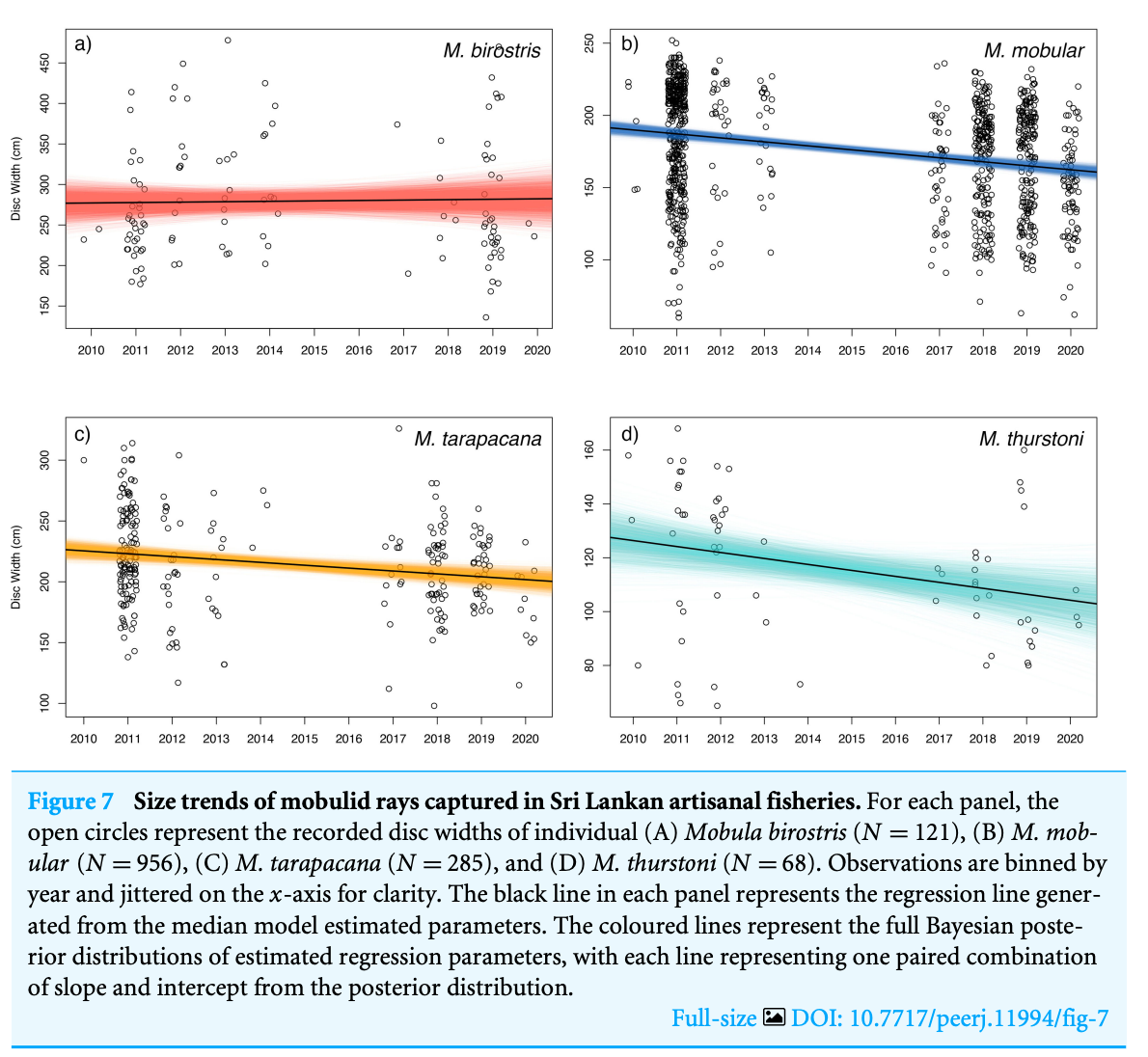
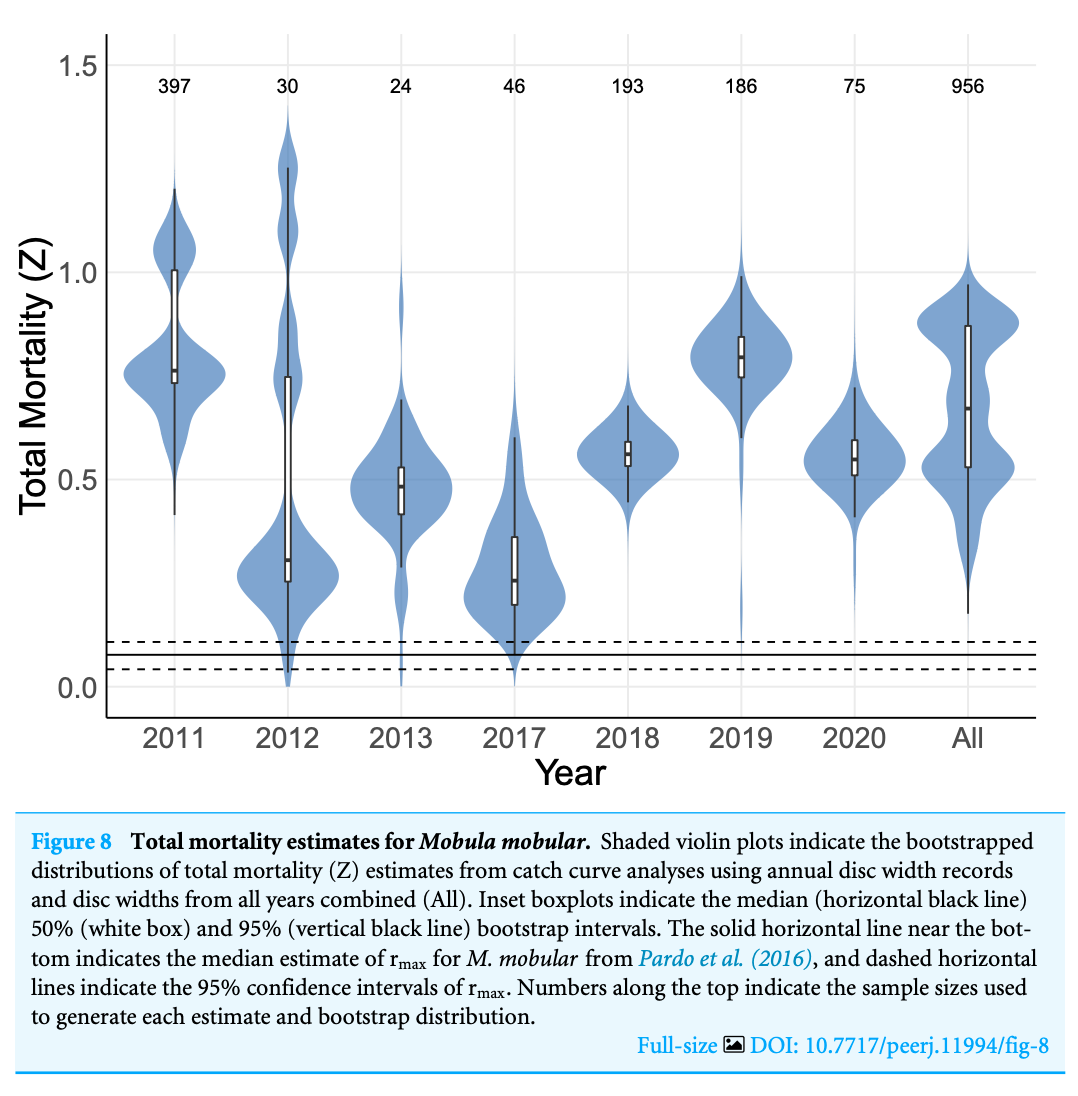
Summary: Expanding fisheries in developing nations like Sri Lanka are having a significant impact on threatened marine species like mobulid rays. A lack of information on life history, demographics, population trends, and fisheries impacts hinders effective management measures for these species. Researchers have reported on mobulid fishery landings over nine years between 2011 and 2020 across 38 landing sites in Sri Lanka and found that catch rates have declined an order of magnitude for all species across the study period. This suggests overfishing of mobulid ray populations in the northern Indian Ocean by Sri Lankan artisanal fisheries. This study recommends strengthening the management of these species through improved implementation of CITES, CMS, and regional fisheries management actions.
Abstract
“Background
Expanding fisheries in developing nations like Sri Lanka have a significant impact on threatened marine species such as elasmobranchs. Manta and devil (mobulid) rays have some of the most conservative life history strategies of any elasmobranch, and even low to moderate levels of bycatch from gillnet fisheries may lead to significant population declines. A lack of information on life history, demographics, population trends, and fisheries impacts hinders effective management measures for these species.
Method
We report on mobulid fishery landings over nine years between 2011 and 2020 across 38 landing sites in Sri Lanka. We collected data on catch numbers, body sizes, sex, and maturity status for five mobulid species. We used a Bayesian state-space model to estimate monthly country-wide catch rates and total annual landings of mobulid rays. We used catch curve analyses to estimate total mortality for Mobula mobular, and evaluated trends in recorded body sizes across the study period for M. mobular, M. birostris, M. tarapacana and M. thurstoni.
Results
We find that catch rates have declined an order of magnitude for all species across the study period, and that total annual captures of mobulid rays by the Sri Lankan artisanal fishing fleet exceed the estimated annual captures of mobulids in all global, industrial purse seine fisheries combined. Catch curve analyses suggest that M. mobular is being fished at rates far above the species’ intrinsic population growth rate, and the average sizes of all mobulids in the fishery except for M. birostris are declining. Collectively, these findings suggest overfishing of mobulid ray populations in the northern Indian Ocean by Sri Lankan artisanal fisheries. We recommend strengthening the management of these species through improved implementation of CITES, CMS, and regional fisheries management actions. In addition, we report on the demographic characteristics of mobulids landed in Sri Lanka and provide the first record of M. eregoodoo in the country.”
Author Affiliations
Blue Resources Trust
The Manta Trust
Department of Biology and Environmental Science, Linnaeus University
Funded by
Linnaeus University
Save Our Seas Foundation
The Manta Trust
Shark Conservation Fund
Marine Conservation and Action Fund by New England Aquarium
Ocean Park Conservation Foundation, Hong Kong
Tokyo Cement Group

